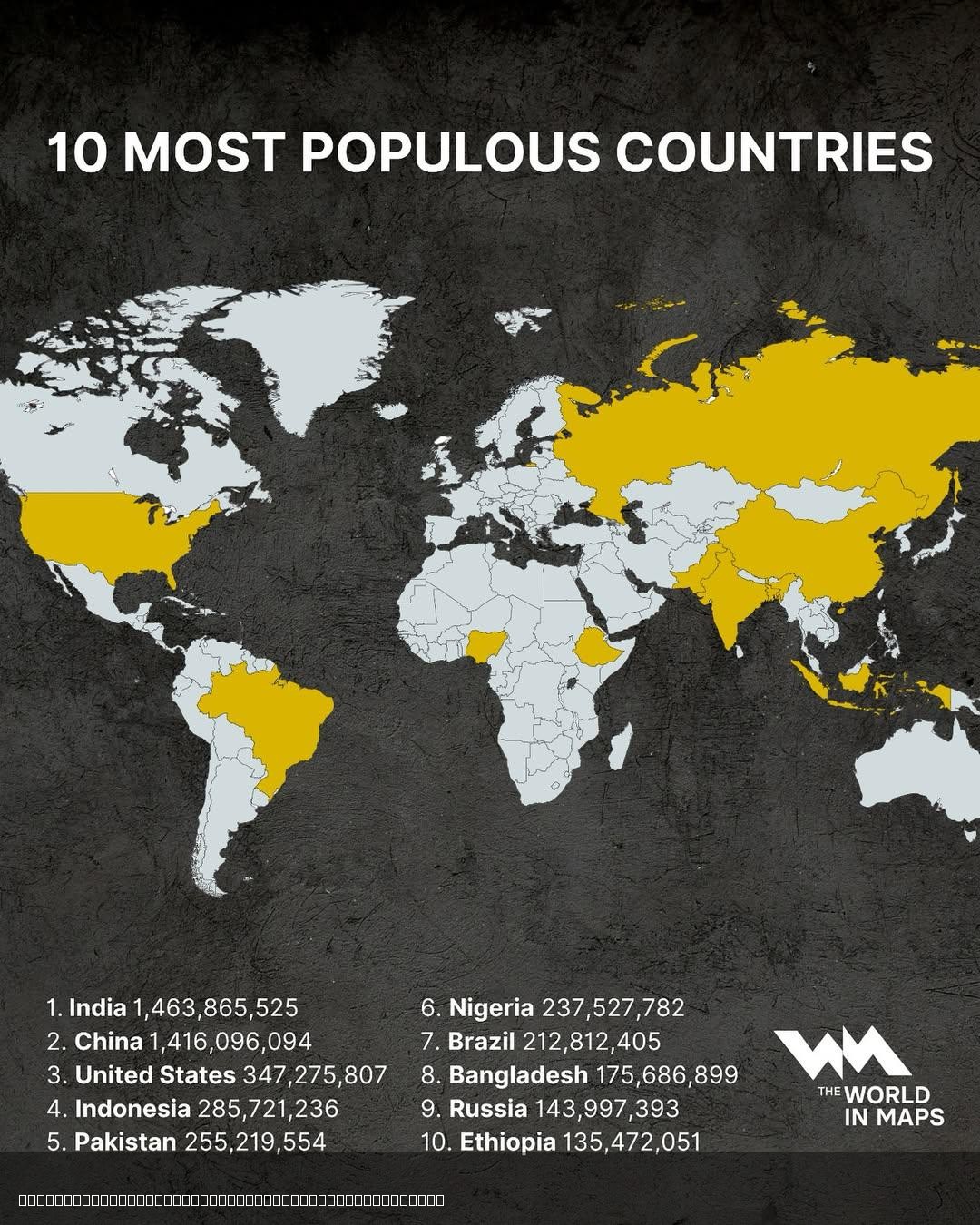10 Most Populous Countries in the World Map


Alex Cartwright
Senior Cartographer & GIS Specialist
Alex Cartwright is a renowned cartographer and geographic information systems specialist with over 15 years of experience in spatial analysis and data...
Geographic Analysis
What This Map Shows
The "10 Most Populous Countries in the World Map" provides a clear visualization of the countries with the highest population figures as of today. This map highlights not just the sheer numbers, but also gives us insight into demographic trends and urbanization patterns that shape our world today. Understanding population distribution is key to grasping various socio-economic issues, from resource allocation to urban planning.
Deep Dive into Global Population Trends
Population dynamics are a fascinating subject, reflecting the intricate interplay of social, economic, and environmental factors. As of 2023, the most populous countries are China, India, the United States, Indonesia, Pakistan, Brazil, Nigeria, Bangladesh, Russia, and Mexico. Together, these nations house over half of the global population.
China remains at the top of the list, with approximately 1.4 billion people, though it's worth noting that India's population is projected to surpass this figure very soon. The growth in these two countries can be attributed to factors such as historical birth rates, improvement in healthcare, and migration patterns.
Interestingly, countries like Nigeria are witnessing rapid growth, with a population of about 223 million. This surge is driven by high fertility rates and a relatively young population. In contrast, countries such as Russia are experiencing stagnation or even decline due to low birth rates and emigration.
Urbanization plays a crucial role in population distribution. Many people flock to urban centers in search of better job opportunities, education, and living conditions. For instance, cities like Tokyo, Delhi, and São Paulo have become megacities with populations exceeding 20 million. This shift towards urbanization not only affects population density but also presents challenges such as overcrowding, inadequate infrastructure, and environmental degradation.
Furthermore, the demographic transition model helps us understand how countries evolve from high birth and death rates to low birth and death rates. For example, while India and Nigeria are still in the earlier stages of this transition, countries like the U.S. and Brazil are experiencing more stable population growth. This model can provide insight into future population trends and potential economic development.
Regional Analysis
Breaking down the map by region reveals distinct population characteristics. In Asia, both China and India dominate the population landscape, making up a significant portion of the continent's population. Southeast Asia, particularly Indonesia and Pakistan, shows remarkable growth rates, driven by high fertility and youth demographics.
In North America, the United States stands out with a population of around 332 million. Its growth is influenced by immigration, which is a crucial factor in maintaining its demographic diversity. Interestingly, while the U.S. population continues to grow, Canada, with its smaller population, has a higher growth rate due to its immigration policy.
In Africa, Nigeria is an outlier with its rapid population increase, contrasting sharply with the population trends in many European countries, where growth is stagnant or negative. Countries like Russia and Germany face challenges related to aging populations and declining birth rates, which can have long-term implications for their economies and social services.
Meanwhile, Latin America showcases a mixed bag. Brazil, the largest country in the region, is experiencing slower growth rates compared to its neighbors, reflecting a shift in societal values and family planning. Countries like Mexico, however, still maintain a higher growth rate, driven by younger demographics.
Significance and Impact
Understanding the population distribution and growth trends outlined in this map is vital for various reasons. It influences global policies on resource management, environmental sustainability, and economic development. As populations grow, the demand for food, water, and energy increases, leading to potential shortages and competition for resources.
Moreover, the urbanization trend raises questions about infrastructure, healthcare, and education. Cities must adapt to accommodate growing populations or risk becoming unlivable. Countries that can effectively manage this growth will likely experience economic benefits, while those that struggle may face considerable challenges.
Looking ahead, projections suggest that global population could reach around 9.7 billion by 2050, with most of this growth occurring in developing countries. This raises important questions: How will nations cope with this growth? What innovative solutions can be implemented to ensure sustainable development? As geography enthusiasts, these questions guide our understanding of the world's future.
In conclusion, this map not only displays numbers but also tells a story of human dynamics, aspirations, and challenges. By studying the world's most populous countries, we gain valuable insights into the future of our planet and the diverse tapestry of cultures that inhabit it.
Visualization Details
- Published
- August 7, 2025
- Views
- 120
Comments
Loading comments...